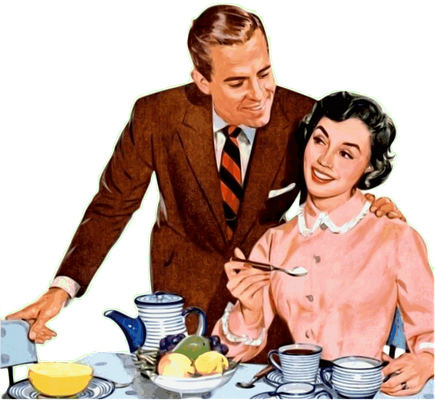1.1.2
Feminism
Liberal Feminism
Liberal Feminism
Liberal feminists believe that there are 2 barriers to gender equality today.


Liberal feminists
Liberal feminists
- Liberal feminists are the most optimistic and progressive with regards to their outlook in the quest for equality.
- They don’t blame men for inequality however they do believe that gender inequality does still exist although we are moving towards a more egalitarian society.
- Liberal feminists believe that there are 2 barriers to gender equality today.
Marxist Feminism
Marxist Feminism
Marxist feminists focus on the additional exploitation women experience in capitalist systems in comparison to men.


Women and capitalism
Women and capitalism
- Marxist feminists are inspired by the work of traditional Marxists however they would criticise Marx for overlooking the exploitation of women in capitalism.


Exploitation
Exploitation
- Marxist feminists specifically focus on the way in which women are exploited within this family unit and therefore benefit capitalism.


Status
Status
- They believe that due to the nature of capitalism, the only way in which status can be gained is to generate wealth through paid employment.
- The problem for many women is that much of their days are dominated by unpaid domestic labour that provides them with no status.
Radical Feminism
Radical Feminism
Radical feminists believe that men are the main enemy of all women and patriarchy is the main form of social inequality.


Patriarchy
Patriarchy
- Their key focus is on ‘patriarchy’ which means ‘rule by fathers’ but has become the term commonly used to describe a male dominated society.


Female oppression
Female oppression
- They believe that all societies are patriarchal and therefore all men oppress women through ‘sexual politics’.
- Men are the main enemy of all women and therefore patriarchy is the main form of social inequality according to radical feminists.


Sexuality
Sexuality
- Along with these beliefs, radical feminists discuss the nature of sexuality which is a central theme of their theory.
- Rich argues that men push women into ‘compulsory heterosexuality’ which she believes is narrow and unsatisfying to women but beneficial to men as it fulfils only their desires.
1Theory & Methods
1.1Sociological Theories
1.2Sociological Methods
2Education with Methods in Context
2.1Role & Function of the Education System
2.2Educational Achievement
2.3Relationships & Processes Within Schools
3Option 1: Culture & Identity
3.1Conceptions of Culture
3.2Identity & Socialisation
3.3Social Identity
3.4Production, Consumption & Globalisation
4Option 1: Families & Households
4.1Families & Households
4.2Changing Patterns
4.3The Symmetrical Family
4.4Children & Childhood
5Option 1: Health
5.1Social Constructions
5.2Social Distribution of Healthcare
5.3Provision & Access to Healthcare
5.4Mental Health
6Option 1: Work, Poverty & Welfare
6.1Poverty & Wealth
7Option 2: Beliefs in Society
7.1Ideology, Science & Religion
7.2Religious Movements
7.3Society & Religion
8Option 2: Global Development
8.1Development, Underdevelopment & Global Inequality
8.2Globalisation & Global Organisations
8.3Aid, Trade, Industrialisation, Urbanisation
9Option 2: The Media
9.1Contemporary Media
9.2Media Representations
10Crime & Deviance
10.1Crime & Society
10.2Social Distribution of Crime
Jump to other topics
1Theory & Methods
1.1Sociological Theories
1.2Sociological Methods
2Education with Methods in Context
2.1Role & Function of the Education System
2.2Educational Achievement
2.3Relationships & Processes Within Schools
3Option 1: Culture & Identity
3.1Conceptions of Culture
3.2Identity & Socialisation
3.3Social Identity
3.4Production, Consumption & Globalisation
4Option 1: Families & Households
4.1Families & Households
4.2Changing Patterns
4.3The Symmetrical Family
4.4Children & Childhood
5Option 1: Health
5.1Social Constructions
5.2Social Distribution of Healthcare
5.3Provision & Access to Healthcare
5.4Mental Health
6Option 1: Work, Poverty & Welfare
6.1Poverty & Wealth
7Option 2: Beliefs in Society
7.1Ideology, Science & Religion
7.2Religious Movements
7.3Society & Religion
8Option 2: Global Development
8.1Development, Underdevelopment & Global Inequality
8.2Globalisation & Global Organisations
8.3Aid, Trade, Industrialisation, Urbanisation
9Option 2: The Media
9.1Contemporary Media
9.2Media Representations
10Crime & Deviance
10.1Crime & Society
10.2Social Distribution of Crime
Unlock your full potential with Seneca Premium
Unlimited access to 10,000+ open-ended exam questions
Mini-mock exams based on your study history
Unlock 800+ premium courses & e-books

